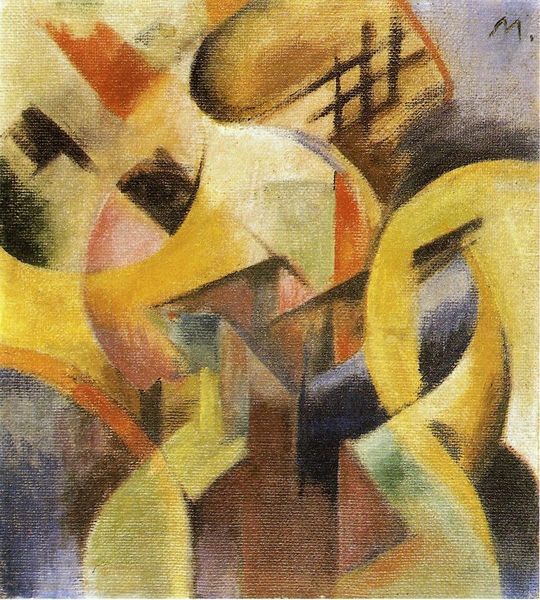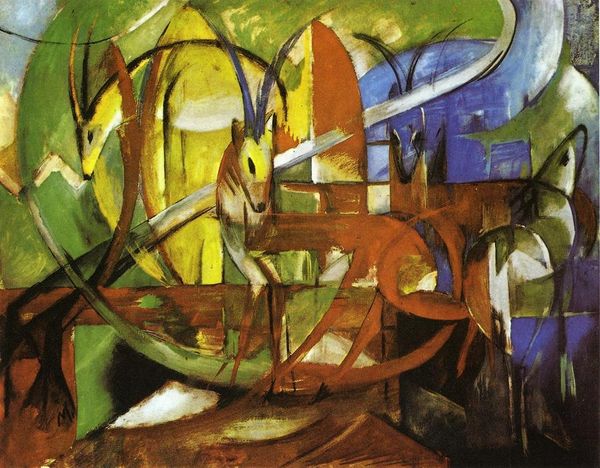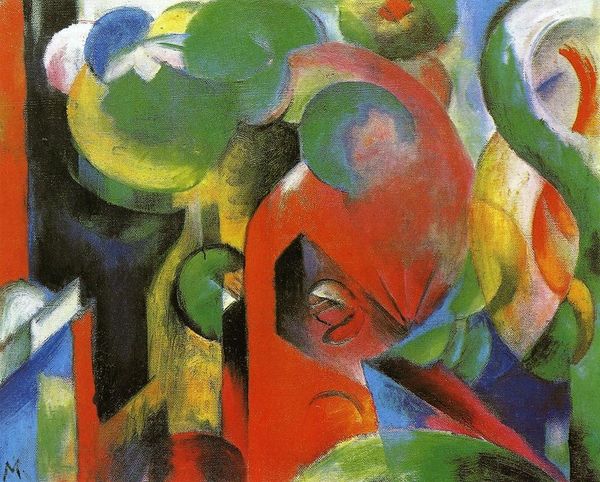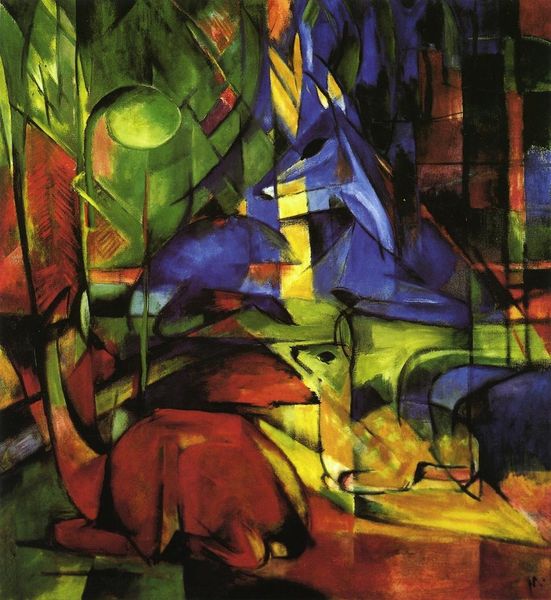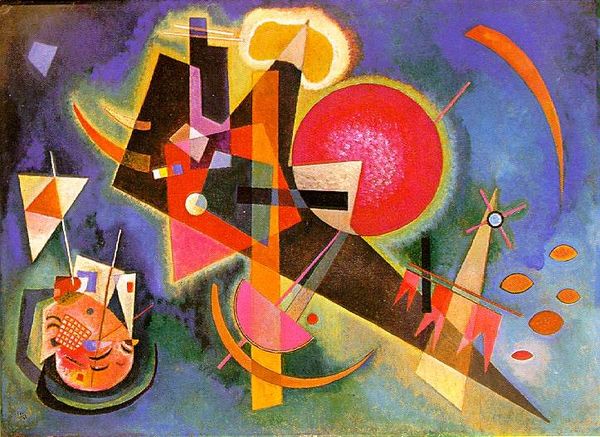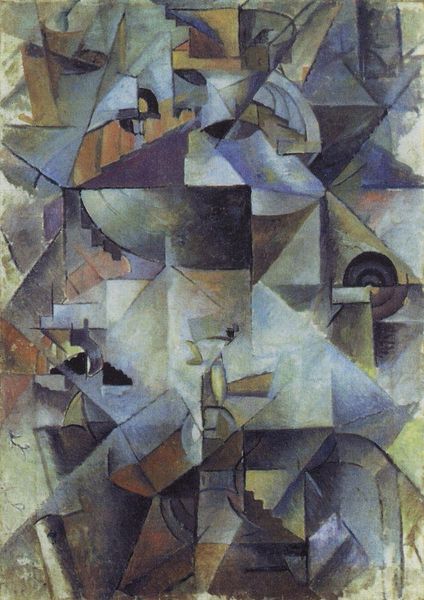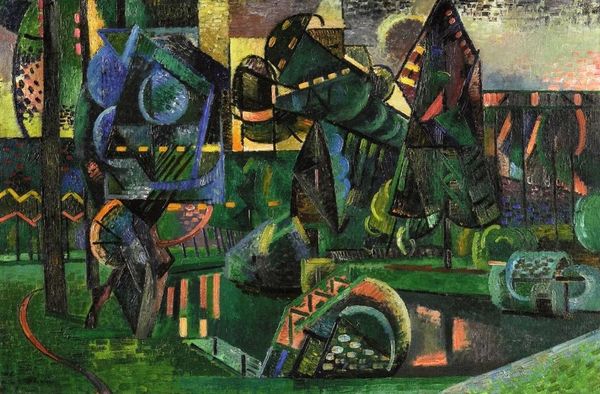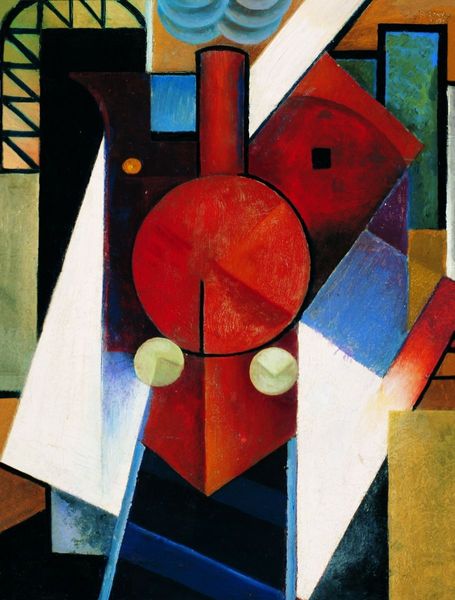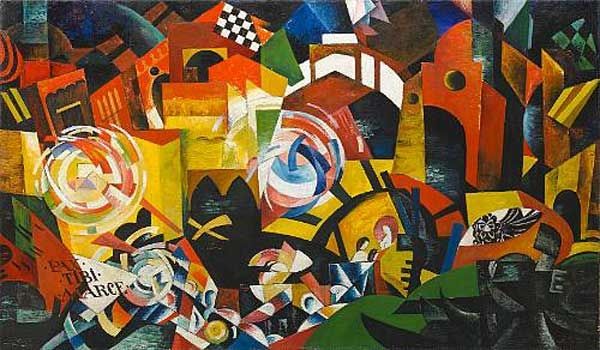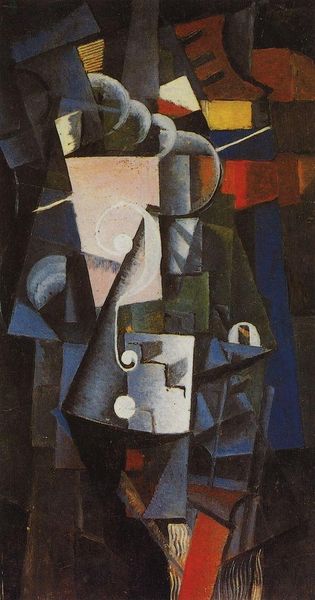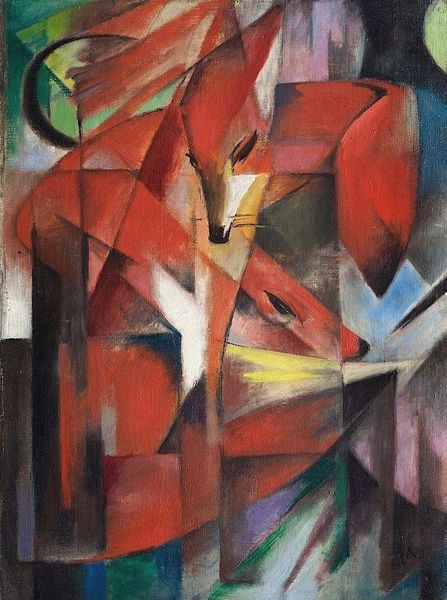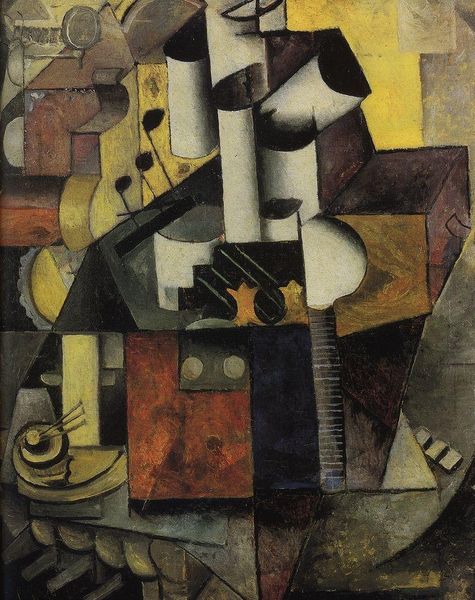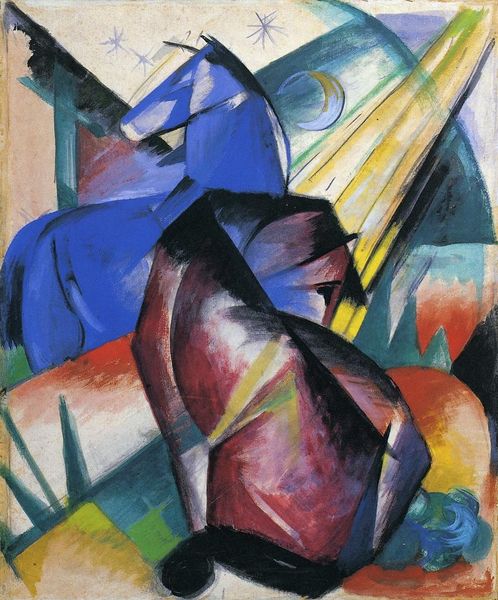
Dimensions: 92 x 130.8 cm
Copyright: Public domain
Editor: Franz Marc's "Picture with Cattle," an oil painting from 1913, is certainly... intense. The vibrant colors and fragmented forms create a chaotic landscape. It's almost hard to decipher the animals at first. What are your initial thoughts when you look at this painting? Curator: It strikes me as a potent example of how material conditions and artistic expression intertwined in the early 20th century. Consider the oil paint itself: its increasing availability and affordability democratized artistic production. Marc, trained in academic painting, consciously broke with those traditions. Editor: So, the shift in materials enabled the change in style? Curator: Exactly! Look at the fragmented forms and unnatural colors. These weren't accidental; they were deliberate choices born from a rejection of traditional artistic labor. The Cubist influence, alongside the Fauvist palette, shows an interest in moving beyond mere representation, instead engaging with the materiality of the paint itself to convey emotion and experience. Consider also the societal context. What was the impact of urbanization on artistic consciousness? Editor: It seems like a rebellion against industrialization and mass production by embracing handmade and artistic labor. The artist expressing a pure view of the animal within a modern world? Curator: Precisely! Marc used materials to challenge established ways of seeing and representing the world, hinting at the societal anxieties around industrial modes of production that were emerging at the time. What is the difference between how a butcher perceives cattle compared to an abstract painting like this? Editor: I never considered how the means of material production influence the work. Curator: The materials and the process themselves carry meaning, and those meanings are historically contingent. "Picture with Cattle" becomes not just a painting but a testament to artistic agency. Editor: That gives me a lot to think about, it's interesting to consider this artwork through the perspective of its materials and modes of production. Thank you for your explanation!
Comments
No comments
Be the first to comment and join the conversation on the ultimate creative platform.
